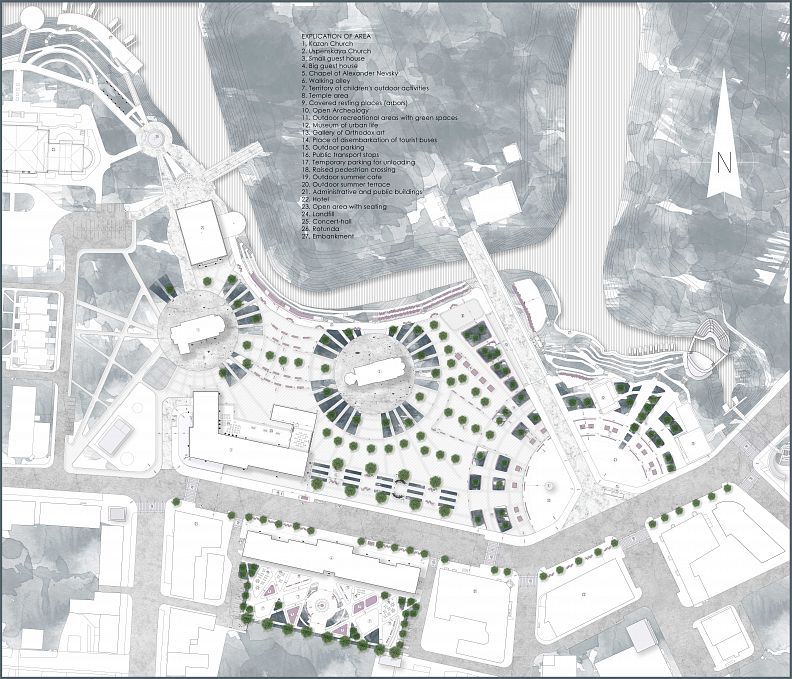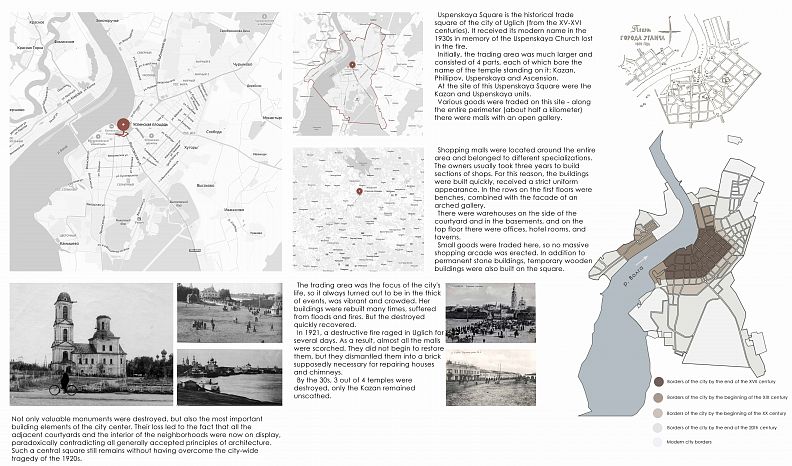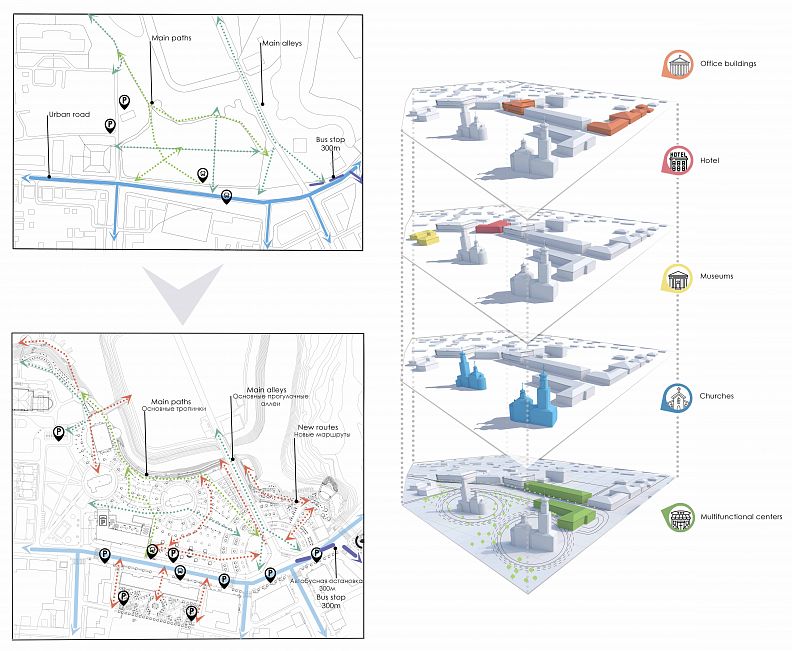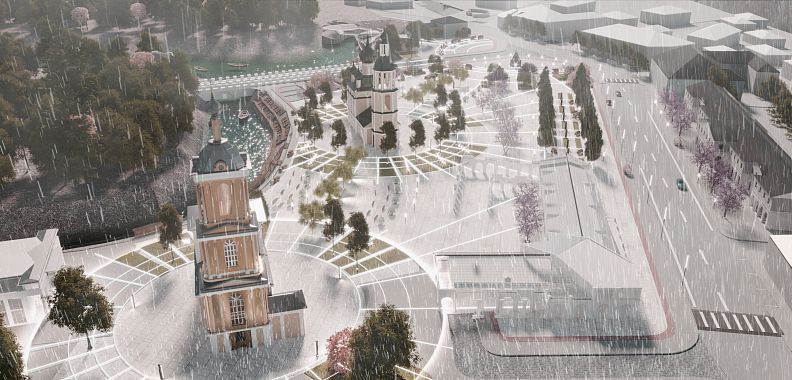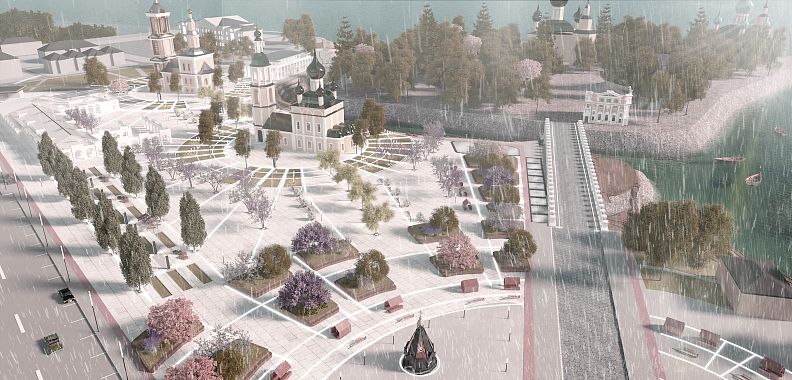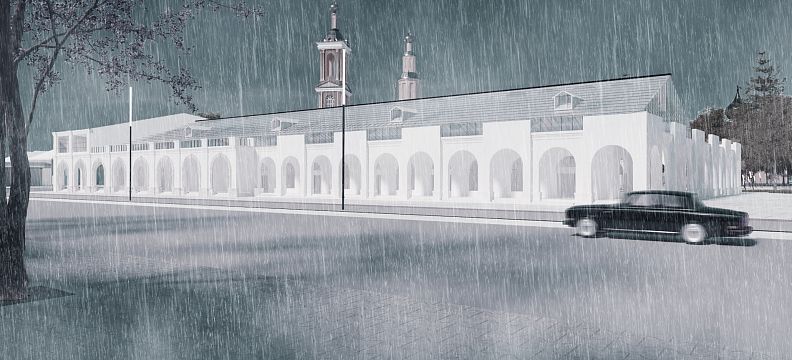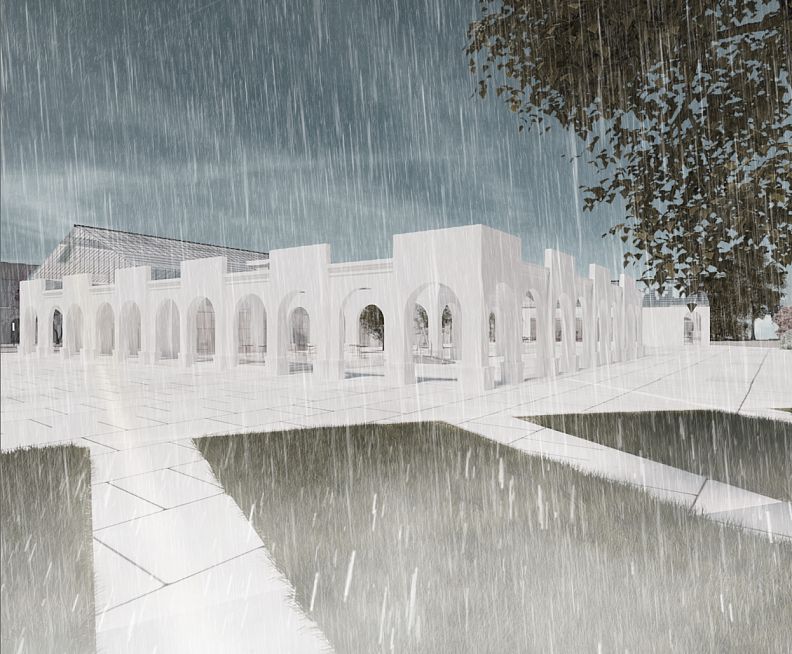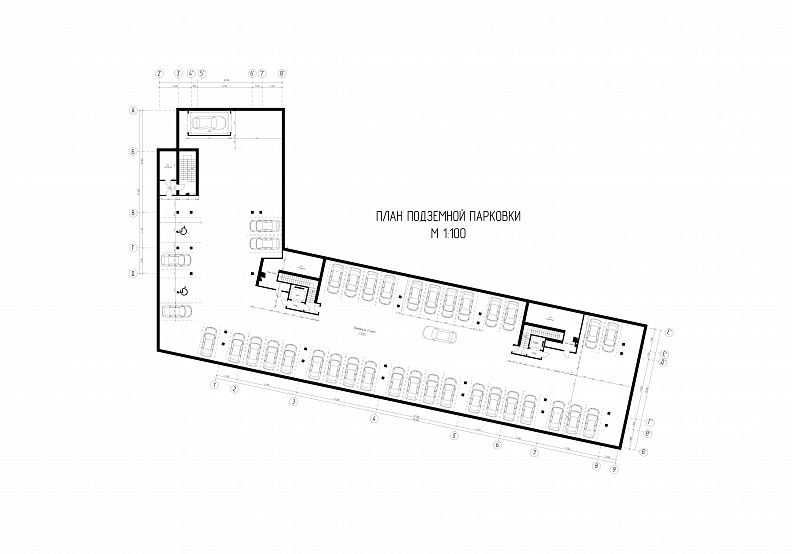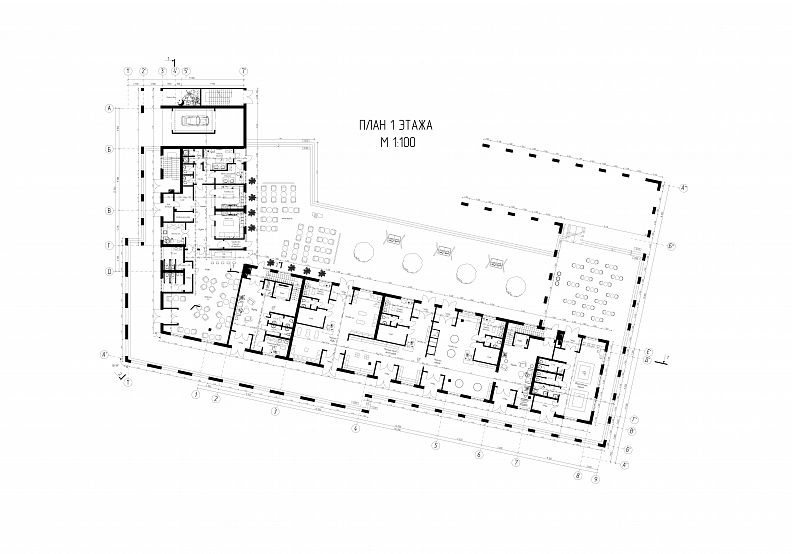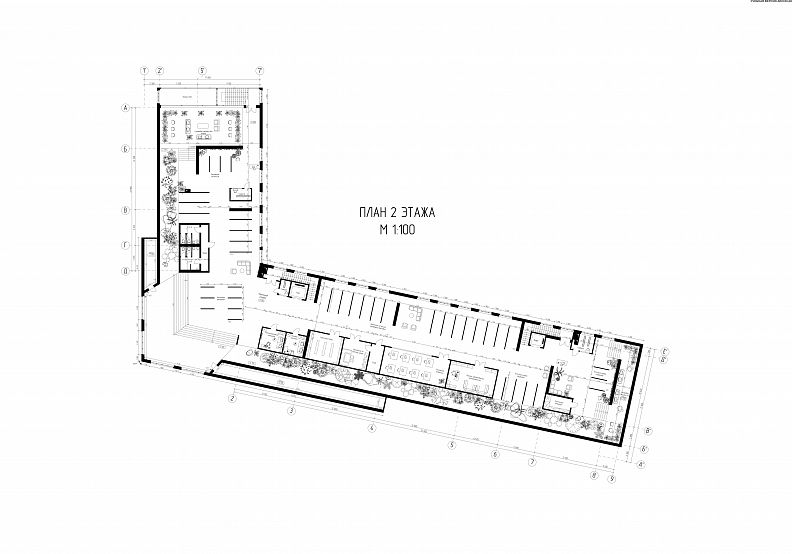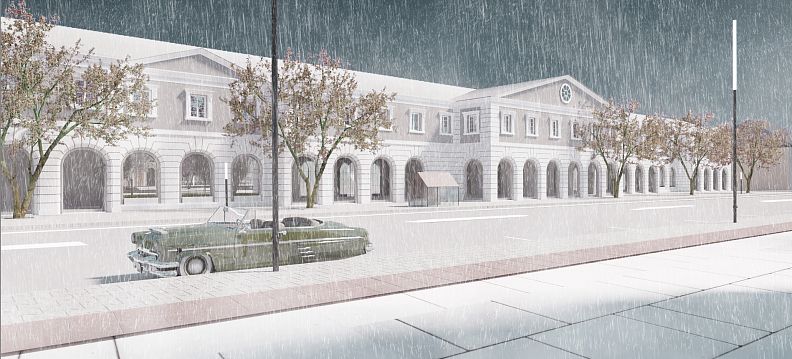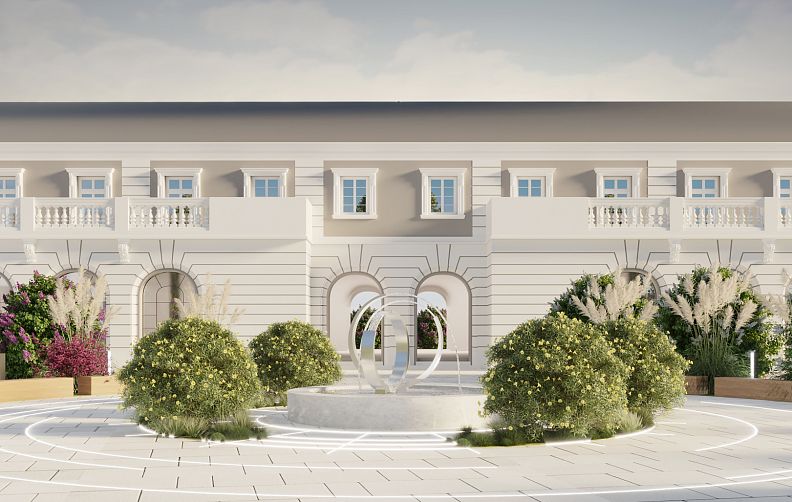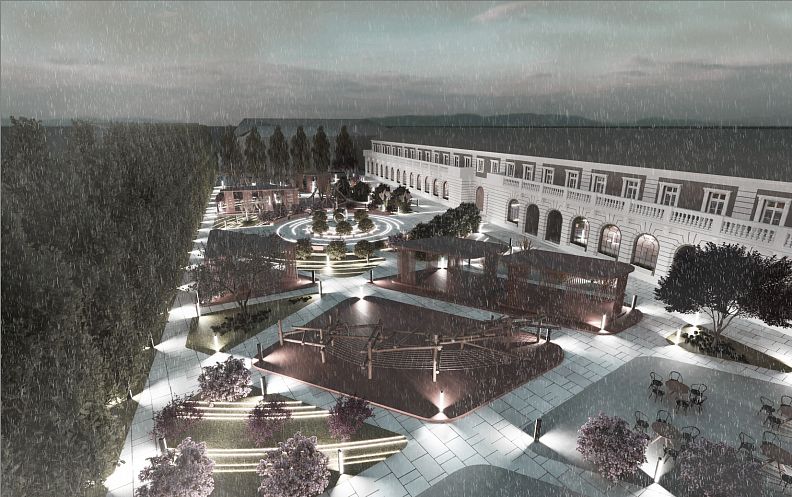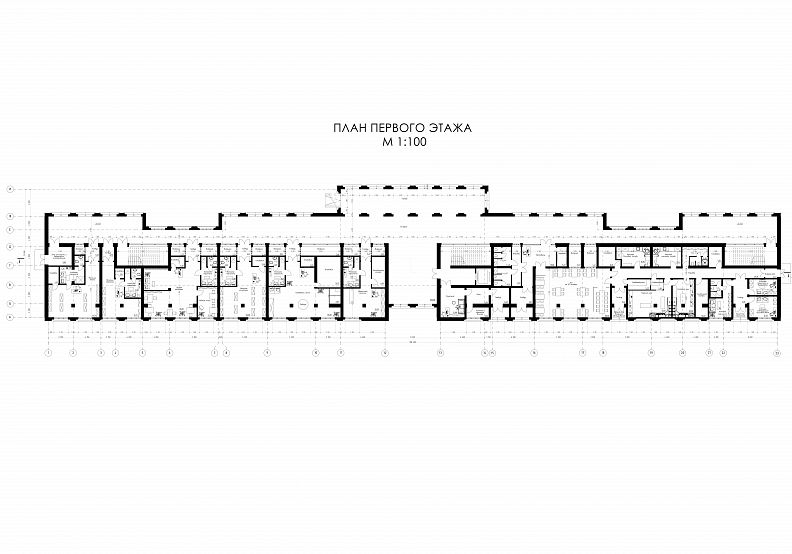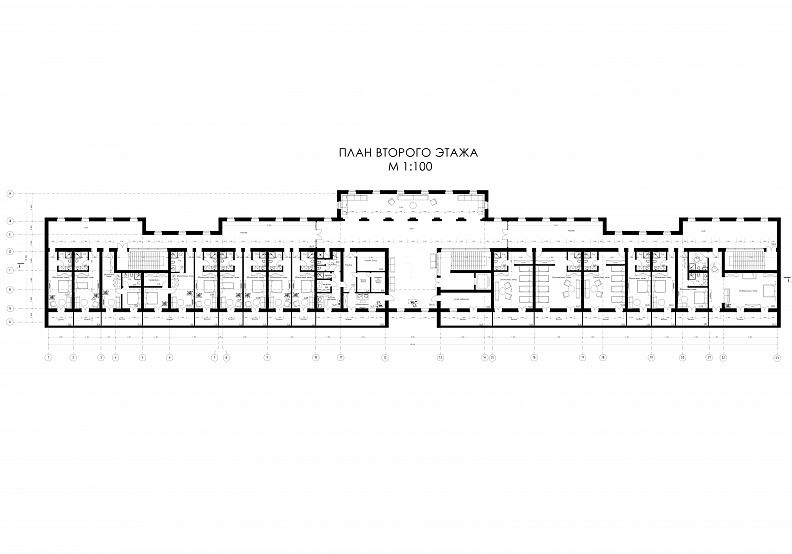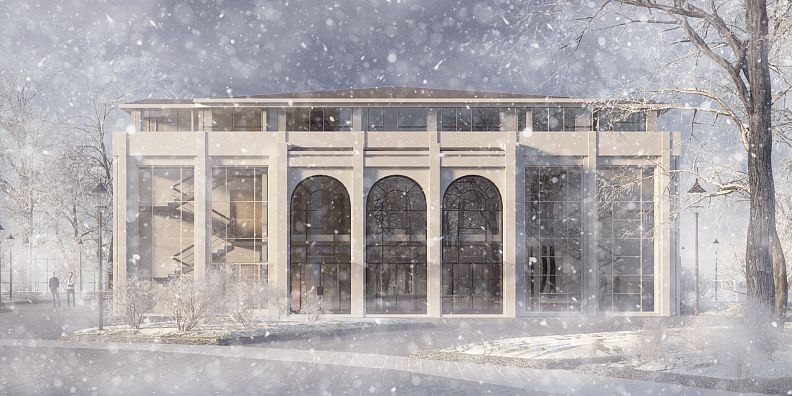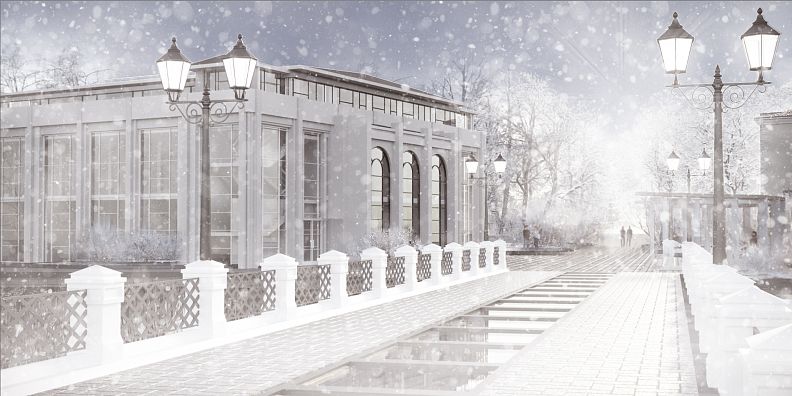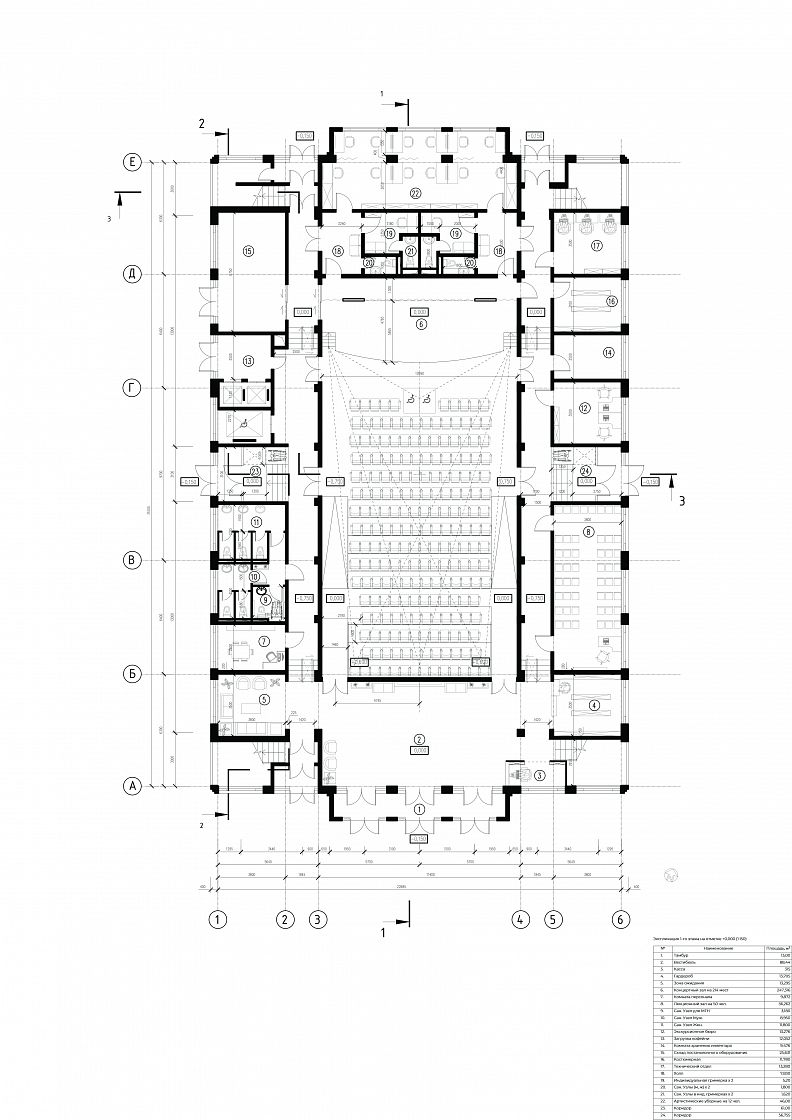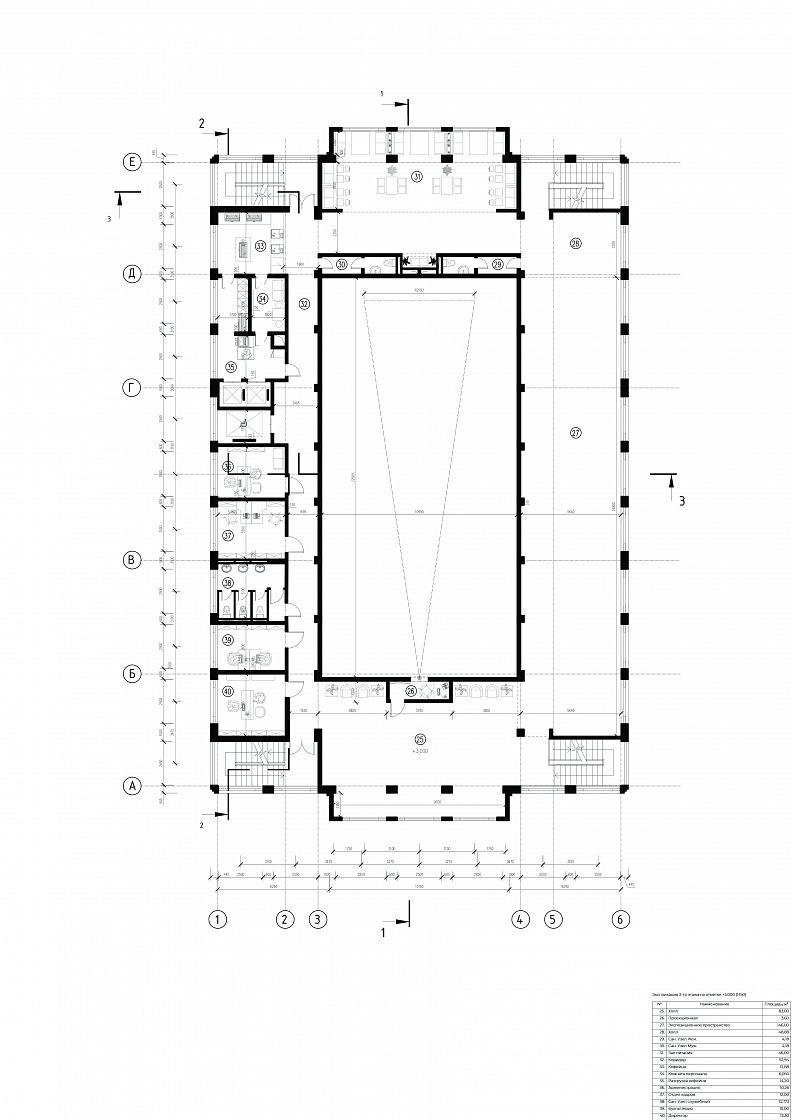Regeneration of Uspenskaya square in Uglich

Project idea
The project idea is to regenerate the territory of Uspenskaya square to improve the quality of the urban environment, the transformation of public spaces, as well as the formation of a composite skeleton and consolidation of the compositional axes of the urban environment, and as a result, increase the tourist attractiveness.
To achieve these goals, the following tasks were solved:The formation of urban planning composition, Creation of new public spaces and functional areas, Restoration of lost ensembles and elements of the urban environment, Increase in aesthetic mass, Organization of a new pedestrian – traffic
The main idea is to make a project of full, new Uspenskaya square, regenerate Small guest house and Big guest house not exactly how they were built years ago but in new forms and materials, create new river embankment and new concert-hall.
Project description
Uspenskaya Square - the main square of Uglich, is located in the historic center of the city. The space of the square is subordinate to the Kazan Church, as well as to the lost Uspenskaya Church and the guest houses. The problem of the current state of Uspenskaya Square is the lack of an existing ensemble due to the loss of most of the buildings and, accordingly, the lack of the necessary infrastructure and loss of aesthetic mass.
The project of the regeneration of the Uspenskaya Square includes urban planning and architectural planning.
The compositional axis extends from the rotunda project through the concert-hall project, in an arcuate direction through the Kazan and Uspensky churches, passes through the Bridge Square and ends with the open amphitheater project.
In the ensemble with the Kazan Church, the Uspenskaya forms the compositional core of the entire historical center. For this, it is necessary to restore the Uspenskaya Church of the Mother of God, this is done on the basis of design developments of the architect - restorer O.V. Beresnev.
Between the churches an open space forms, forming a boulevard with a guide line for planting trees. The boulevard is flanked by benches, lighting and makeshift landings. This direction is emphasized in the configuration of the open arcade gallery, which borders the courtyard of the Small guest house. Around the churches is formed a ring of ribbons of lawns, broken by small paths.
The direction from the Esplanade of the Uspenskaya Church to Predmostnaya Square is framed by ordinary tree planting and rest places. Chapel of Alexander Nevsky, returns to its historical place on the Bridge Square. And on its eastern side is a bus stop just for disembarking tourists in the central part of the city.
The project provides for the creation of open public spaces using natural materials. Their location makes Predmostnaya Square stand out as a separate unit, creating an esplanade around the Alexander Nevsky chapel.
In the eastern part of Uspenskaya Square, open archeology is located, which runs from the beginning of the Nikolsky Bridge to a large section opposite the embankment.
Necessary is the decision to change the profile of the city highway, limiting the area on the south side. Having expansion in the central part, it creates tensions between all road users.
A Small guest house fixes the Southwest corner of Uspenskaya Square and closes its perimeter. The direction of the large wing develops in the boulevard along the southern border of the square. The entire perimeter is visually fixed by the ordinary planting of trees.
The Big guest house fills in the visual failure of Uspenskaya Street between the city administration and the corner trade building, and finally fixes the southern border of Uspenskaya Square.
Forming is based on a retrospective analysis, but at the same time, we have left the traditional typology of trade rows, accommodating the functions necessary for the city.
The concert-hall is located in the direction of the main pedestrian links that go from Uspenskaya Square to the embankment. It is distinguished by its simplicity of composition. The appearance of the concert-hall is solved in modern forms and materials, using plastic and the structure of environment.
The architecture of the Small guest house is built on a combination of different volumes. The left part of the building, located on the corner of the square is made in the classic style. The corner of the building is fixed with the help of the device of the second floor, extending the pilasters upward and facilitating the construction due to the full glazing of the window openings.
The broken line of the southern facade is formed using the ledge of the classic arcade gallery along the western flank of the main facade.
Moving east, the classic arcade solution is replaced by protruding more modern arches that do not have a cornice and rise above the main arcade.
There is no arcade on the inside of the courtyard near the walls of the building; this was done with the aim of increasing the trading space inside the shops. This facade has a modern configuration of window and door arched openings.
In terms of use, the covered part of the courtyard is L-shaped and includes the following premises: a cafe with 31 seats, shops, and staircase and elevator nodes, distinguished by lounge areas, for access to the attic or underground floor. The most extreme premises on the south side is the public market, intended for the sale of products and products by any resident of the city. The attic floor is an open exposition space for street and any other artists. In addition to the trading function, the Small guest house also carries the function of an underground parking, which is designed for 39 parking spaces.
The building of the Big guest house is composed of several rectangular blocks. From the main highway of the city there is a gallery. It has a through passage to the courtyard of the territory. The building is richly decorated with stucco. On the ground floor there is an arched gallery. The central pediment and risalit emphasize the axial composition, forming mirror symmetry. The courtyard facade also has mirror symmetry about the main axis.
The layout of the building is divided into two equal parts, one relates to the trading function, including also the service sector, the second has the function of cafe on the ground floor, so the cafe is designed for 50 people. The second floor is fully occupied by the hostel's residential function. It is designed for a simultaneous stay of 46 people. Each room has its own private outdoor balcony overlooking the courtyard.
The building of the concert and entertainment center is simple in composition. One of his tasks was the completion of the town composition of Uspenskaya Square
The concert-hall is located on the construction site in the direction of the main pedestrian links that go from Uspenskaya Square to the embankment. concert-hall is solved in modern forms and materials, using plastic and the structure of the medium. The new building does not break the structure of the building, but applies details that are scaled to the environment, successfully continuing the building image of this building. The optimal building material for this type of construction is that of mirror glass. So, the facade reflects the surrounding historical environment and thus only emphasizes its importance.
The central portico-risalits acting on the front facades will be a replica of the past and thematically unified with temple architecture.
The building in the plan is made in the proportions of the golden section. The outer contour of the walls is solved as compactly as possible - this will improve heat efficiency.
Technical information
master plan, ground floor of small guest house, second floor of small guest house, attic floor of small guest house, ground floor of big guest house, second floor of of big guest house, ground floor of concert-hall, second floor of concert-hall, third floor of concert-hall, pedestrian schemes
Co-authors
Silviya Al Ubed, Ksenia Zakharova
